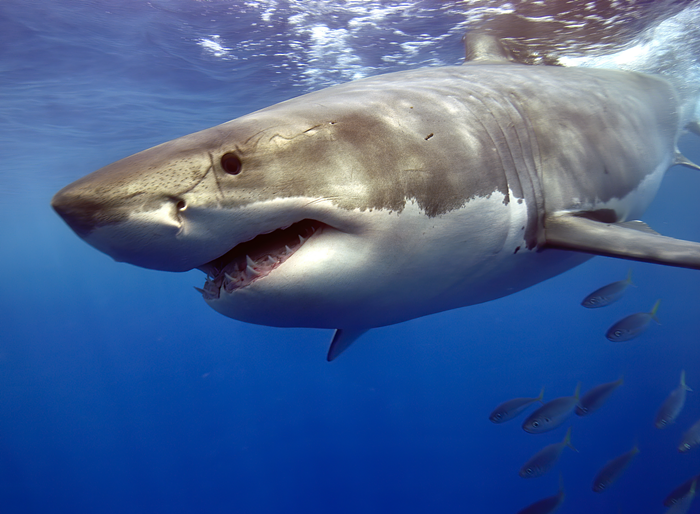WELCOME BACK to Debate Club, the printed equivalent of two music nerds fighting over a parking spot. For this installment, Mercury metal expert Aris Wales and Music Editor Ned Lannamann argued over Rush's greatest achievement. Wales selected the Canadian trio's sophomore album, 1975's stoned-out Fly by Night. Ned chose 1981's slick Moving Pictures. (What neither of these bozos realize is that Rush's best album is, in fact, 1976's 2112.)
Rush performs this Sunday, July 28, at the Sleep Country Amphitheater; Multnomah County Chair Jeff Cogen will possibly be in attendance.
NED: So, why do you hate Moving Pictures?
ARIS: I don't hate Moving Pictures. It's just a pop record more than their other stuff.
NED: Wait, so does that make "Tom Sawyer" a pop song?
ARIS: Maybe, and if so, it's a super-great pop song. It's the fucking air-drum song of the century. Every time that song comes on the radio, even if I'm driving, I have to take my hands off the wheel to do the fills.
NED: I know what you mean, though. Moving Pictures does have that slicker, glossier sound. It's not at all crunchy like their early stuff, and there's no swing to it.
ARIS: There is some heaviness, which is what I love—"Tom Sawyer" has some heaviness, and same with the instrumental track, "YYZ." But "Limelight"? It's an okay song, but it's cheesy. There are better songs about being a huge rock star.
NED: It's just funny to think of Neil Peart, of all people, writing about the turmoil of being a famous rock star. He wrote all Rush's lyrics—which is odd, for the drummer of the band to be the lyricist. Naturally, all their lyrics turned out super nerdy.
ARIS: That's sort of the joke about Rush. "Oh, you listen to Rush? You must play D&D." It's either that, or you're somebody who can read music really well and can play, like, five instruments like a virtuoso.
NED: Fly by Night is your favorite, though?
ARIS: Yeah, I think so. Like you said, the early stuff is crunchier. It's definitely heavier. It has some of the softer, gentler songs, if you will, but "By-Tor and the Snow Dog," man? That song's mean. There's that instrumental part, where they keep lopping off notes off that one melodic phrase. They repeat it, each time with one fewer note.
NED: But that's just them being showboats. Showing off their technical precision rather than doing something for the music's sake. It's not musically pretty at all, it's just, "Oh, look what they can do."
ARIS: In your opinion. I think it's badass. And that was the very beginning of their whole "look what we can do" technical element. Fly by Night was their first album with Neil Peart, and with him on board, they got a lot more flash, a lot more pizzazz. He's a totally great rock drummer on that record, but by the time Moving Pictures came around, he was Neil Peart, who can do anything and is a technical master of his instrument. And that's what he does. With Fly by Night, though, you can hear his youth, his development. His humbleness.
NED: Have you seen the documentary they made a few years ago? Beyond the Lighted Stage?
ARIS: I haven't.
NED: Oh man. It is so good.
ARIS: Everybody keeps telling me that! I gotta see it.
NED: I've seen a lot of music documentaries and it is one of the best I've ever seen. Even if you don't like Rush, you'll fall in love with them by the end of it. Although, who's gonna sit through that movie if you don't love Rush?
ARIS: Well, someone can make you sit through it.
NED: It's the most charming thing. It goes through every element of their career, and they're very self-deprecating. Some of the '70s stuff, they're like "Aw, man, what were we thinking?" And some of the '80s stuff, they go, "No, really—what were we thinking? What the hell were we wearing?" They're totally down-to-earth guys.
ARIS: Well, they're Canadians.
NED: The best part is at the very end of the movie. All three of them go out to dinner, and they're all older and wiser. But these three very successful old men are sitting in this fancy restaurant and they all just get hammered, cracking jokes and teasing each other and being pals. It's the greatest thing. It's hilarious.
ARIS: Bands that have been together that long, they end up either hating each other and function like businessmen, or they're brothers.
NED: You definitely get the brotherly sense from them. But back to the early stuff, it is definitely the most rocking stuff they ever did. Later on, they got more into sci-fi on 2112 and the space-cadet stuff. In some ways, that's my favorite element of Rush, the weird, prog-rock, science-fiction element.
ARIS: That's all Neil Peart's lyrics—he's creating all those realms.
NED: And the extended storytelling, like on 2112 and A Farewell to Kings. And the weird sound effects they did.
ARIS: I was listening to Fly by Night and Moving Pictures side by side to see how much more synth and studio overdubs came later, compared to the raw three-piece element from before. But they're both pretty equal! There's a little more digital glossiness to Moving Pictures for sure, and everything's a little bit cleaner, but they're both surprisingly similar in that respect. The two elements of Rush that you can't deny, no matter what era, are Neil Peart and Geddy Lee. The guitarist, Alex Lifeson—you can tell he's good, but it's always Neil Peart's drums and Geddy Lee's vocals that jump out.
NED: They're one of those rare bands where drums are the lead instrument.
ARIS: Yeah, there aren't that many. There haven't been any since the '70s. And it helps that he's the one writing the lyrics.
NED: It's true, though. Rush is totally nerdy. And that's got to be one of the reasons you love 'em, if you love 'em.
ARIS: It's the band that your rocker uncle tells you to like. And you're not really sure about it at first, but as you get older, you're like, "Aw man. My rocker uncle was right."
NED: They still have obsessive fans who like all the recent stuff, too. I can't go that far. But there are people who are totally down with it.
ARIS: My friend isn't even a super-obsessive Rush fan, and he blew me up about the new song. "Oh, it's so good!" I finally heard it on the radio, and I was like, this is garbage!
NED: They've been steadily putting out new material regularly, except for that period in the late '90s where Neil Peart drove off in his motorcycle, right? After his wife and his daughter died?
ARIS: Yeah, within a few months of each other. He wrote a book—have you read the book?
NED: I don't know if I can read Neil Peart's book. I feel like that might be a little too much Rush nerdiness for me.
ARIS: He had to do his walkabout. Here was this huge rock star who had everything together, and it all fell apart.
NED: That's another big part of the movie. At that point, they were like, "We kind of thought the band was over." Nobody knew where Neil Peart was—if they'd ever see him again or if he was gonna ride his motorcycle into the ocean.
ARIS: It's good they kept making music after that. But there is that question that you can ask every Rush fan—where do you stop? What album is the last one you can stand? I have a friend who won't listen to anything after Hemispheres [1978].
NED: That's pretty early. Let me think. After Moving Pictures came Signals, and that one's crazy synthy. But I like it. I'm not married to Rush's butt-rock origins at all, so for an attempt at an '80s synth-rock record, it's pretty good. And I even like the one after that, Grace Under Pressure. That might be the cutoff for me.
ARIS: Signals is the jump-the-shark record for many, I think. And I don't think anyone can get behind "Roll the Bones." There's that hiphop breakdown thing in the middle of it. Ugh. I don't know what they thought they were doing. Canadians can't rap.
NED: Except for Snow. Hey, speaking of snow, let's get back to Fly by Night—which has snow on the album cover. (See how I did that?) Do you like the title track?
ARIS: I don't like it. Or, I didn't like it when I heard it on the radio. I thought it was the cheesiest Rush song—I'd rather hear "Tom Sawyer," admittedly. But once you hear it within the context of the record, it's a lot more fun. It's definitely the one that jumps out first, the catchy one that everyone can get into. And the great thing is that, after that, the rest of the album gets so much darker from there. It ends up melting your face.
NED: What's the best track?
ARIS: "By-Tor and the Snow Dog," man. That's the one that builds up to that crazy fractal breakdown thing. I don't even know how to describe it. Then it gets all quiet and moody, and then it builds back up to the beginning of the song—and the song almost has like a shuffle to it. It's got a cool feel.
NED: That was their first extended suite, where all the sections had these different goofy names, like "Part One: By-Tor Meets the Snow Dog," or whatever. [Editor's note: Part One of "By-Tor and the Snow Dog" is actually titled "At the Tobes of Hades," which is hilarious.]
ARIS: And there's that weird album cover with the giant owl that has these weird claw-things for feet. They're like a polar bear's paws.
NED: Maybe that's supposed to be By-Tor? Or one of the Snow Dogs?
ARIS: Well. Let's talk about the Moving Pictures album cover for a minute.
NED: It's a pun. A visual pun.
ARIS: That album cover's terrible. It's just silly. "Oh look, they're moving actual pictures." What year was that?
NED: 1981.
ARIS: So that's the beginning of the end, that album?
NED: I suppose so. When they came through two years ago, their show began with a set of new songs, which were all awful. But then they played Moving Pictures from start to finish, and man. It was great. Every song holds up. I don't know if that would be the case with Fly by Night.
ARIS: What's your favorite song on Moving Pictures?
NED: It has to be "Tom Sawyer."
ARIS: It's so good!
NED: I've heard it so many times that I have it memorized—I don't ever need to hear it again. But when I do, it sounds so, so great.
ARIS: Well, that's the problem with Moving Pictures. Nothing else on there is nearly as good.
NED: Maybe. But I'll take "Tom Sawyer" over fucking "By-Tor and the Snow Dog."













